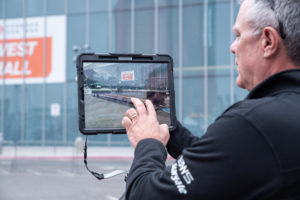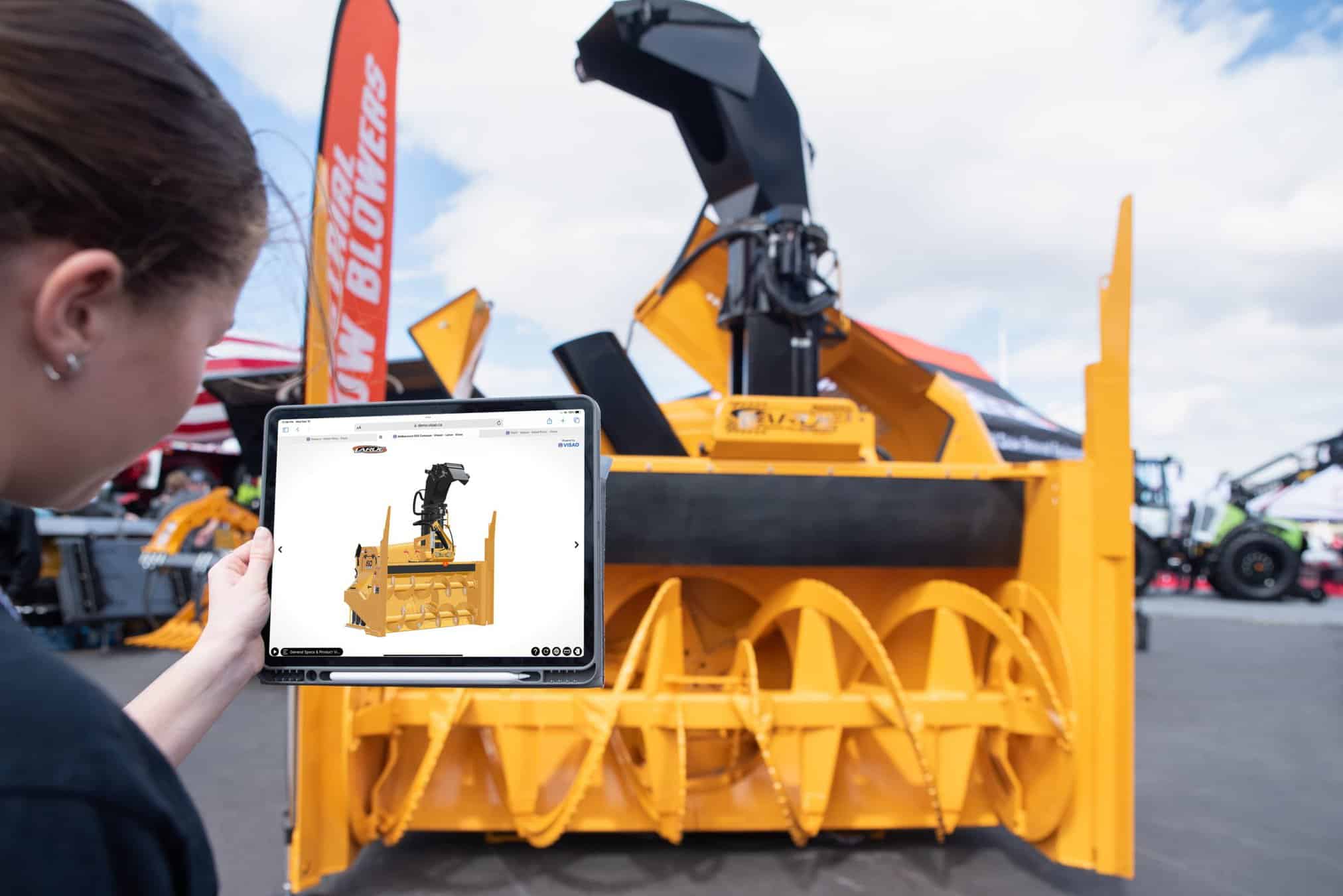Are you a marketer in the manufacturing industry seeking a competitive edge? Look no further than augmented reality (AR). With AR, you can revolutionize your approach to manufacturing by showcasing products in a new dimension and providing immersive experiences for customers. From product visualization to design review, the incorporation of AR opens up exciting possibilities. In this guide, we explore how AR can enhance manufacturing and provide practical insights for marketers to leverage this technology for business success. So, get ready to incorporate AR into your marketing strategies effectively!
What is 3D and Augmented Reality Technology?
Before we delve into the advantages of augmented reality (AR) in the manufacturing industry, let’s establish a clear understanding of 3D technology and the term augmented reality. 3D technology encompasses the creation of three-dimensional representations of physical objects in digital worlds, which can be achieved through various methods such as with CAD file formats. With Visao’s technology, you can easily create a 3D product viewer using our online platform, providing an immersive and interactive experience for your audience.
Augmented reality (AR), on the other hand, is a cutting-edge technology that enables an interactive experience by overlaying digital information onto the physical world. This is achieved through the use of a camera, display, mobile device, and computer vision technology, which work together to blend the virtual world of content with the real physical environment in real-time seamlessly.
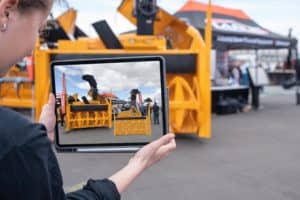
What are the different types of augmented reality?
Augmented Reality (AR) has two main types that are relevant to the manufacturing industry: Marker-based AR and Markerless AR.
Marker-based AR relies on physical markers as reference points for AR content. When the device’s camera detects these markers, it overlays digital content onto them. Marker-based AR can be used in various manufacturing applications such as assembly instructions, equipment maintenance, and quality control.
On the other hand, Markerless AR, also known as location-based tracking, does not require physical markers. It utilizes device sensors like GPS and camera to determine the user’s location and orientation, overlaying digital content accordingly. Marker less AR can be applied in manufacturing scenarios such as warehouse navigation, facility layout planning, and remote assistance for field technicians.
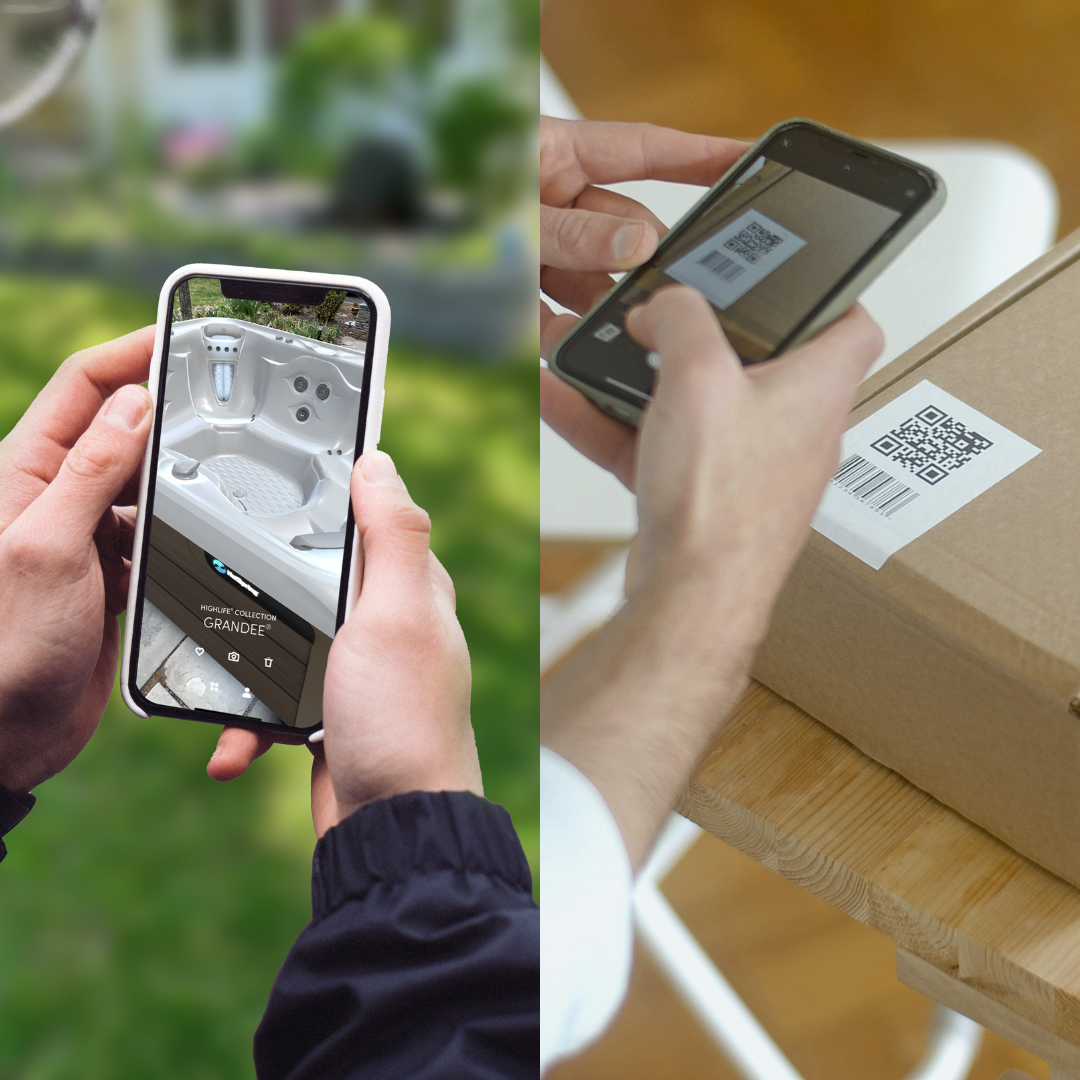
The choice of AR type for a manufacturing application depends on specific requirements such as the need for precise tracking, mobility, and environmental conditions.
What is the difference between AR technology and Virtual Reality?
The difference between augmented reality (AR) technology and virtual reality (VR) lies in their respective approaches to user experience. An AR system enhances the real-world environment by overlaying digital content, such as images, videos, or 3D models, on the real environment using devices like smartphones, tablets, or smart glasses. This enables users to interact with the real world while simultaneously viewing and interacting with digital content. This technology also utilizes object recognition, allowing users to identify and interact with real-world objects through the overlay of content.
On the other hand, VR creates a completely immersive digital environment that users can enter using headsets or other specialized equipment, shutting out the physical world. VR provides a fully virtual experience where users can interact with and navigate through a computer-generated environment.
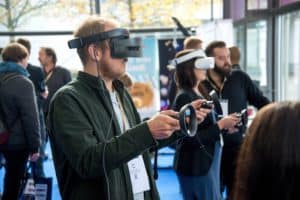
Is AR Better than VR for manufacturing?
Both augmented reality (AR) and virtual reality (VR) have their advantages in the context of manufacturing. Unlike virtual reality, AR provides an overlay of content onto the existing real-world environment, enhancing it with digital information, instructions, or visualizations. AR can be accessed using ar enabled devices like smartphones, tablets, or ar glasses (think google glass), which are relatively easy to use and do not require complex setups, making AR more accessible and user-friendly in a manufacturing environment without significant investment in specialized equipment. On the other hand, VR creates a fully immersive virtual environment that can be useful for simulations, training, or design purposes. However, VR may require more specialized equipment, such as using head-mounted displays, headsets or controllers, which can be more cumbersome to set up and use in a manufacturing setting.
Ultimately, the choice between AR and VR for manufacturing depends on the specific use case, requirements, and resources of a company. Both technologies have their strengths and can be effectively utilized depending on the needs of the manufacturing processes and workflows.
8 ways to boost sales with augmented reality
Benefits of Using Augmented Reality in the Manufacturing Industry
Enhanced Product Visualization
With augmented reality, manufacturers can create virtual product demos and digital visual elements that go beyond traditional product images and videos. an AR device allows customers to visualize and interact with products in 3D, providing a highly engaging and immersive experience. Customers can view products from different angles, rotate them, zoom in for a closer look, and even see animations or interactive elements that showcase the product’s functionalities.
Moreover, AR devices can also enable customers to customize products by changing configurations, textures, colours, or adding accessories, providing a personalized experience that helps them envision the product in their own space. This level of interactivity and customization can significantly enhance customers’ understanding of the product’s features and functionalities, leading to increased confidence and informed purchase decisions.
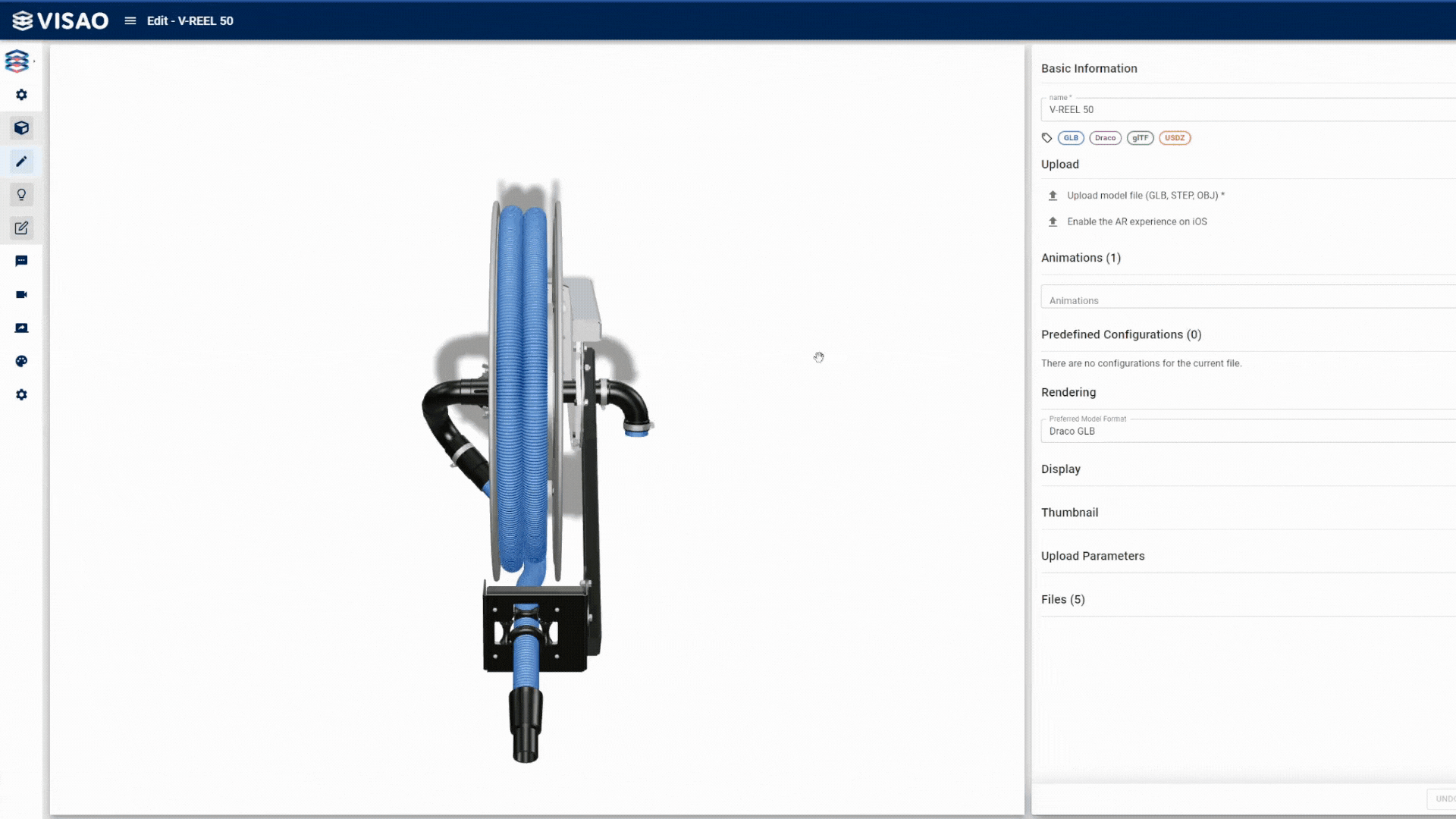
Innovative Marketing Strategies
Augmented reality offers marketers an innovative way to create interactive and memorable marketing campaigns that capture customers’ curiosity and attention. One popular application of AR in marketing is through social media platforms, where brands can leverage various AR features, filters or effects to allow ar users to experience products in 3D or engage with unique and interactive content. This can generate excitement, create a buzz, and drive user engagement, as users share their AR experiences with their social networks, expanding brand visibility and reach.
Another example is AR-enabled product packaging or advertisements, where customers can use their smartphones or other input devices to scan QR codes or markers on packaging or ads, triggering a virtual experience. This immersive technology can include 3D product visualizations, interactive animations, or even gamified experiences that provide a unique and personalized interaction with the product or brand. Such immersive experiences can create a memorable brand impression, differentiate the brand from competitors, and foster customer engagement and loyalty.
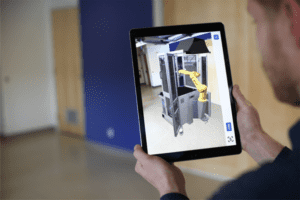
Furthermore, these augmented reality solutions can also be integrated into the e-commerce strategy of manufacturers. By offering AR experiences on e-commerce platforms or websites, customers can virtually try on products, visualize how they would fit or look in their surrounding environment, or customize products to suit their preferences. This can provide a seamless and convenient online shopping experience, reduce purchase uncertainty, and increase conversion rates.
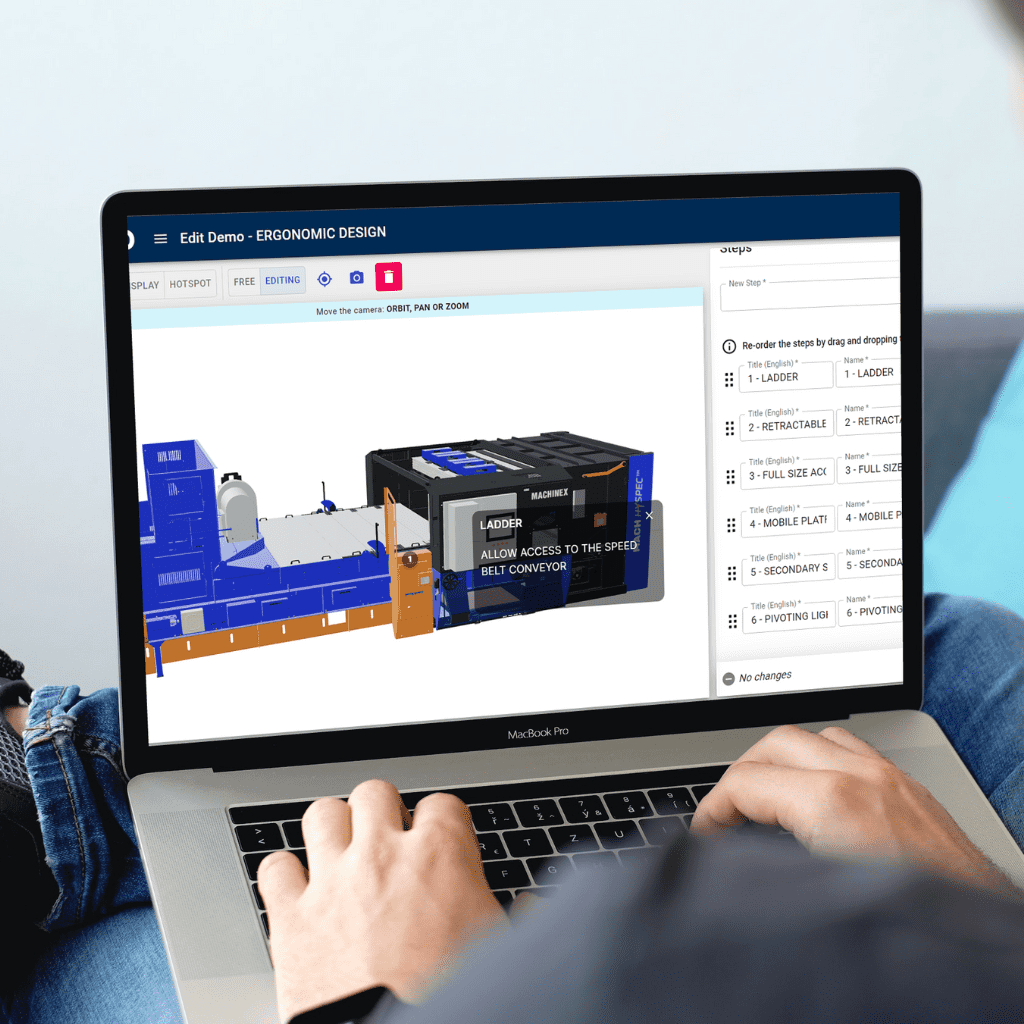
Curious about using our platform?
Discover the ease of creating 3D viewers with Visao’s online platform! Our new whitepaper proves just how easy it is – even for employees with no 3D experience. Don’t just take our word for it, see for yourself!
Additionally, AR apps can also facilitate virtual showrooms or virtual try-on experiences for home furniture, interior design, or other complex products, allowing customers to visualize how the product would fit and look in their space before making a purchase decision, ultimately driving sales and customer satisfaction.
Improved After-Sales Support
Augmented reality has the potential to greatly enhance customer support and after-sales service in the manufacturing industry. With AR-enabled devices (Ipads for instance), technicians can provide remote assistance to customers, guiding them through complex maintenance or repair tasks in real time, even if they are located in different geographical locations. This can significantly reduce downtime and minimize the need for costly onsite visits, resulting in improved customer satisfaction and reduced operational costs.
One example of how AR can be used for remote assistance is through handheld devices such as iPads or smartphones. Technicians can use these mobile devices to connect with customers through video calls or live chats, using AR to overlay digital annotations, instructions, or visual cues onto the real-world environment of the customer. This enables technicians to guide customers step-by-step through repair or maintenance procedures visually, providing real-time feedback and guidance, even in complex or unfamiliar natural environments or situations. Customers can follow along with the visual instructions on their own devices, manipulating virtual objects and performing the necessary maintenance or repair tasks with confidence. This approach allows for flexibility in device usage, as technicians can use commonly available mobile devices, like iPads or smartphones, making it more accessible and cost-effective for remote assistance in the manufacturing industry.
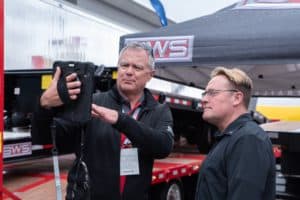
Another example is the use of mobile AR applications that customers can download on their smartphones or tablets. These apps can provide customers with access to digital manuals, interactive tutorials, or step-by-step instructions overlaid on the physical product using AR. Customers can follow along with the visual instructions, manipulate virtual objects, move virtual object, see virtual images of real world objects and perform the necessary maintenance or repair tasks with confidence, even if they have little or no prior experience. This can greatly empower customers to troubleshoot and resolve issues on their own, reducing the need for technical support calls or onsite visits.
Enhanced Training and Education
Augmented and augmented reality apps can revolutionize training and education in the manufacturing industry by providing immersive and interactive simulations of real world environments. With these AR apps , employees can receive realistic training on complex machinery or assembly processes, leading to reduced training time and costs while improving retention and performance.
For example, the AR app can be used to create virtual simulations of assembly line processes, allowing employees to practice assembling products in a digital environment before working on the actual production line. This can help them familiarize themselves with the steps, tools, and safety procedures involved, without the need for physical materials or risking mistakes that could lead to costly errors.
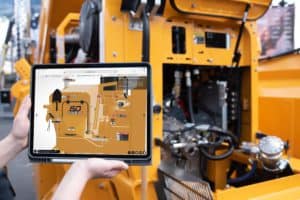
AR can also be used for equipment maintenance training, where technicians can learn how to troubleshoot and repair machinery in a digital environment. This can reduce the need for costly and time-consuming physical training sessions, as employees can gain hands-on experience with virtual equipment and practice various scenarios in a safe and controlled environment.
Furthermore, AR can be used for remote training, where employees in different locations can participate in virtual training sessions simultaneously. This can be especially useful for large manufacturing companies with multiple locations, as it allows for consistent and standardized training across all facilities, saving time and resources.
AR in Manufacturing – Case Studies
Larue, a leading snowblower company, has successfully implemented augmented reality (AR) technology in their sales and after-sales processes using a cloud-based 3D viewer platform. According to Christophe, a marketing manager from Larue, one of the key benefits of utilizing AR is the flexibility and convenience of making changes and updates to the model in the real world surroundings any-time. For instance, if there is a change in the colour of one of their snowblower parts, it can be easily updated on the platform without the need for costly re-filming and redistribution of sequences, which is not possible with traditional 3D animation videos. Christophe believes that Visao can help them save costs when attending trade shows. He explains that bringing a snowblower to a show is both expensive and resource-intensive. However, with Visao’s technology, the product can be displayed on a tactical screen for a comprehensive and immersive experience.
![]()
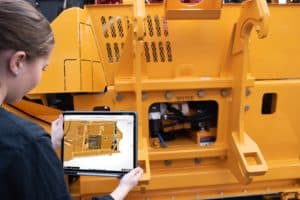
Get Inspired By Larue’s Case Study
Zilia, a medical device company, has experienced significant benefits after integrating 3D visuals into their demonstrations. The process of explaining their technology has become more efficient and organized, as their sales team can now offer assisted demonstrations with computer generated images and clear step-by-step annotations, replacing traditional static demonstration tools. The use of this technology has enabled Zilia’s team to make demonstrations even when the physical presentation of the device is not possible, or to enhance it further. This has impressed their customers and has been particularly useful at trade shows, where they can offer a visually appealing alternative to their device, introducing the technology to more attendees at their booth. Zilia also has plans to expand the capabilities of the viewer to look at the internal components of the device for training purposes in the future.
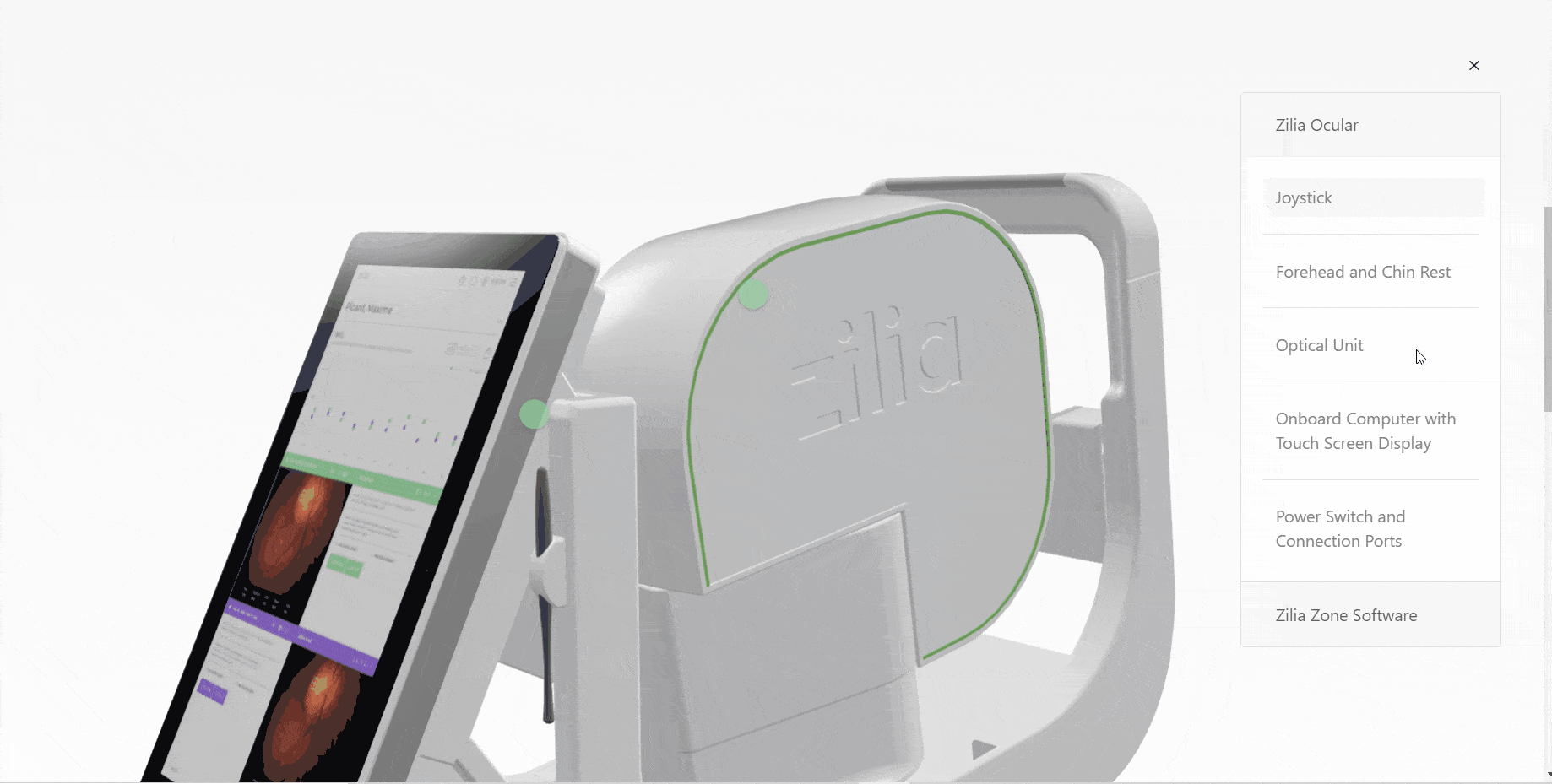
How much does AR cost for manufacturing companies?
The cost of implementing augmented reality (AR) for manufacturing companies can vary greatly depending on several factors. These factors include the number of products to be augmented, the complexity of the products, and the desired functionality to be included in the augmented reality experience. Costs can be relatively low, in the $1-2,000 range, for simple AR applications with limited functionality, or higher, $20-40,000 or more, for more complex, feature-rich AR solutions.
The best way to determine the cost of implementing an AR experience for a specific manufacturing company is to request bids from AR solution providers, who can provide customized quotes based on specific requirements and project scope. It is important for manufacturers to carefully evaluate their needs and budget in order to select an AR solution that meets their business goals and budget constraints.
Future Trends in Augmented Reality for Manufacturing
One of the many ar examples of the exciting trends expected to emerge is the use of augmented reality for predictive maintenance. By using artificial intelligence and overlaying sensors onto equipment, AR can enable real-time monitoring of performance, allowing manufacturers to detect potential issues before they escalate into costly breakdowns. This predictive maintenance approach can greatly reduce downtime, increase equipment efficiency, and ultimately result in significant cost savings.
Another trend that is gaining traction is the use of AR for collaborative design. With AR, designers can work together in a virtual environment, visualizing and manipulating 3D product designs in real-time. This allows for seamless collaboration among team members, regardless of their physical location, and can greatly streamline the product design process. By reducing the need for physical prototypes and software development kits, manufacturers can save time and resources while accelerating the product development cycle.
AR for Manufacturing – Implementation Challenges and Solutions
While it is true that the benefits of augmented reality in manufacturing are abundant, it’s important to acknowledge that implementing AR can be complex and costly. Expenses associated with hardware, software, processing power, data processing, and training can add up, and it may take time to realize a return on investment. Additionally, operating and maintaining AR equipment requires skilled workers, which may pose a challenge for some companies that lack the necessary expertise and resources.
To address these challenges, partnering with augmented reality technology solution companies like Visao can be a viable option. These companies specialize in augmented reality work providing the expertise and resources needed to implement and integrate AR systems and technology effectively in manufacturing settings. By working with a third-party provider, companies can tap into their knowledge and experience, reducing the burden of implementing their AR systems in-house. This approach can help manufacturers navigate the complexities of AR implementation, mitigate risks, and optimize the benefits of AR while minimizing costs and maximizing results.
Want to learn how our client brought their tradeshow experience to another level?
How is AR created for a manufacturing product?
Creating augmented reality (AR) for a manufacturing product involves several steps, and there are many different platforms and methods to achieve it. One common approach is to start with the CAD model of the product and transform it into a STEP file. Next, apps like Blender can be used to add colors, animations, or even remove parts to create a visually appealing and interactive 3D model.
Once the model is ready, it can be imported into a web-based AR platform like Visao, where additional virtual information such as annotations, text, and menu bars can be added to enhance the ar user’s environment experience. This process allows manufacturers to create immersive digital objects, enabling potential customers to visualize and interact with the product in a virtual environment, providing a unique and engaging way to showcase their manufacturing capabilities.
Conclusion
The transformative power of augmented reality in the manufacturing industry cannot be overstated. The ability to enhance efficiency, accuracy, and safety through AR technology presents a promising future for the manufacturing sector. While there may be challenges in implementing a tactical augmented reality system, partnering with experienced augmented reality technology solution companies can be the key to unlocking the full potential of this technology.
As a leader in augmented and mixed reality solutions for manufacturing, Visao is at the forefront of this innovation. Our cutting-edge online platform allows you to visualize your products in 3D and experience them in augmented and mixed reality too, offering a unique and immersive customer experience. Don’t miss out on the opportunity to see your products come to life in AR – book a demo with Visao today and explore the limitless possibilities of augmented and mixed reality used in the manufacturing industry.
